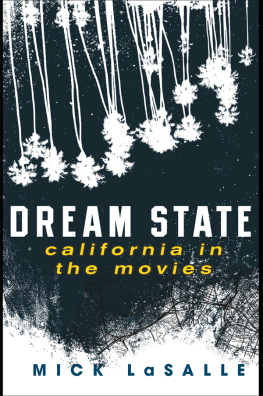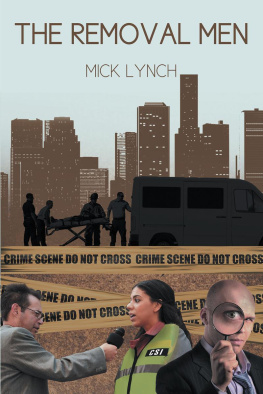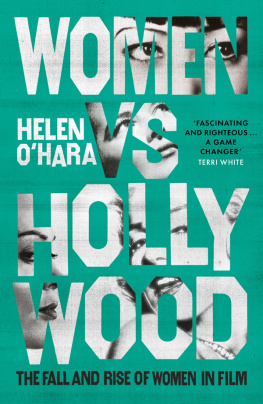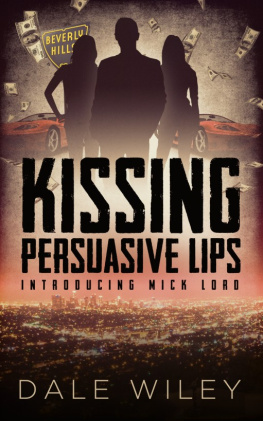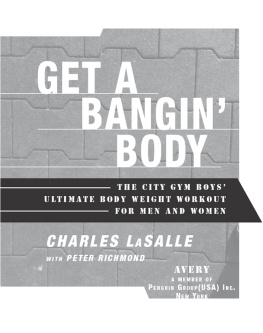Mick LaSalle - Complicated Women: Sex and Power in Pre-Code Hollywood
Here you can read online Mick LaSalle - Complicated Women: Sex and Power in Pre-Code Hollywood full text of the book (entire story) in english for free. Download pdf and epub, get meaning, cover and reviews about this ebook. year: 2014, publisher: St. Martins Press, genre: Science. Description of the work, (preface) as well as reviews are available. Best literature library LitArk.com created for fans of good reading and offers a wide selection of genres:
Romance novel
Science fiction
Adventure
Detective
Science
History
Home and family
Prose
Art
Politics
Computer
Non-fiction
Religion
Business
Children
Humor
Choose a favorite category and find really read worthwhile books. Enjoy immersion in the world of imagination, feel the emotions of the characters or learn something new for yourself, make an fascinating discovery.
- Book:Complicated Women: Sex and Power in Pre-Code Hollywood
- Author:
- Publisher:St. Martins Press
- Genre:
- Year:2014
- Rating:4 / 5
- Favourites:Add to favourites
- Your mark:
- 80
- 1
- 2
- 3
- 4
- 5
Complicated Women: Sex and Power in Pre-Code Hollywood: summary, description and annotation
We offer to read an annotation, description, summary or preface (depends on what the author of the book "Complicated Women: Sex and Power in Pre-Code Hollywood" wrote himself). If you haven't found the necessary information about the book — write in the comments, we will try to find it.
Complicated Women: Sex and Power in Pre-Code Hollywood — read online for free the complete book (whole text) full work
Below is the text of the book, divided by pages. System saving the place of the last page read, allows you to conveniently read the book "Complicated Women: Sex and Power in Pre-Code Hollywood" online for free, without having to search again every time where you left off. Put a bookmark, and you can go to the page where you finished reading at any time.
Font size:
Interval:
Bookmark:

The author and publisher have provided this e-book to you for your personal use only. You may not make this e-book publicly available in any way. Copyright infringement is against the law. If you believe the copy of this e-book you are reading infringes on the authors copyright, please notify the publisher at: us.macmillanusa.com/piracy.
CONTENTS
For Amy,
who is as lovely as Ann Harding,
as gracious as Norma Shearer,
and as big a wise guy as Myrna Loy
INTRODUCTION
The best era for women on screen was not the forties, as has been commonly assumed. The best era had nothing to do with ladies with big shoulder pads and bad hairdos watching their boyfriends light two cigarettes at the same time. It had nothing to do with women apologizing for their strength in the last ten minutes of every film. It had nothing to do with weeping and constant sacrifice and misery.
Those movies may be enjoyable. We may like those movies. But they dont represent the best in womens pictures.
The best era for womens pictures was the pre-Code era, the five years between the point that talkies became widely accepted in 1929 through July 1934, when the dread and draconian Production Code became the law of Hollywoodland. Before the Code, women on screen took lovers, had babies out of wedlock, got rid of cheating husbands, enjoyed their sexuality, held down professional positions without apologizing for their self-sufficiency, and in general acted the way many of us think women acted only after 1968.
They had fun. Thats why the Code came in. Yes, to a large degree, the Code came in to prevent women from having fun. It was designed to put the genie back in the bottleand the wife back in the kitchen. Well discuss this wretched Code later, and at length. But suffice it to say, to a surprising extent, it succeeded.
Another assumption that needs disposing of is the notion that directors are more important than actors. That may be true enough sometimes, but if were talking about pre-1940 American film, the opposite is more often the case. Indeed, its pretty pointless to discuss pre-1940 American film as the art of the director when, in most instances, the stars and the producers called the shots.
Personality was something revered and worshipped in twenties and thirties cinema. People and faces were things to be marveled at. For the first time in history, human beings had the privilege of sitting in the dark and looking at the faces of other human beings, often beautiful ones, thirty feet high and lit up with emotion. Audiences became addicted. They wanted nothing but to bask in and contemplate the faces and personalities they encountered on the screen.
Keep in mind, the close-up was something new back then, newer than the movies themselves. The close-up had only come into widespread use in the second half of the 1910s. Before that, people not only never got to see a close-up in filmsthey never saw one in real life. Real life does not allow people to look at strangers so coldly, worshipfully, appraisinglyand safely. Is it any wonder then that audiences, in the first flush of this amazing newfound privilege, became entranced and fell in loveor that studios catered to that love? Or that it took a full generation for the huge, loving, glistening, soft-focus close-up to seem corny and to fade from view?
In a cinema that worshipped faces and personalities, the stars were, simply enough, people whose faces and personalities were deemed worthy of such contemplation. Their movies answered the need their essences inspired. Their movies were like the rock videos of today. They existed to put the star over, to capitalize on the image, and sometimes to advance the image. The stories were like little myths created around a screen personality, there to provide audiences with the opportunity to look at and think about the star.
Imagethe publics idea of a personalitywas everything. Studios packaged images, sometimes clumsily, sometimes obviously, sometimes slickly, sometimes with great sophistication. And occasionally, when forced to follow a performers lead, they helped to create something powerful and socially important.
Greta Garbo and Norma Shearer were stars of the first order who emerged during the image-conscious era of the mid-twenties. Their movies are still worth watching. When we trace their evolution, from film to film, we do more than get entertained or see strong personalities flowering. We encounter a kind of story working underneath the stories. These actresses used the raw materials of their faces, personalities, and concerns to leave a body of work that reveals a lot about the journey of women in the transitional decade of the 1920s. To watch them is to see the culture move toward a modern sensibility and to see women come into their own.
* * *
WHEN GARBO AND SHEARER started their careers, there were only two kinds of women in the movies. Actresses images were confined to one-dimensional roles straight out of the nineteenth century. A woman of sexual power was evil, if she chose to exercise and enjoy her power. And a nice woman stayed virtuous, even if she did, like Clara Bow, put on a short skirt and go dancing every night. Those were the choices, vamp or ingenue. Take one or the other. Everything else was just a variation on a theme.
Garbo, by nature aloof and mysterious, was forced to play the vamp, a role she hated. Shearer, who radiated integrity, was forced to play the innocent ingenue, which frustrated her. So they rebelled. Over time, and with some struggle, they persuaded Hollywood to drop the stereotypes and greet the new day. They made the movies safe for real women, and a flood of actresses followed them.
It didnt happen all at once, but they were able to succeed thanks to certain shared advantages. First of all, they had clout. Each had the power that goes with popularity, and each had that power by the time she was twenty-two. Secondly, they worked at MGM, the studio that cared most about cultivating stars over the long haul. Thirdly, they came along at a time when censorship was relaxed. And finally, their careers happened during a period in history when audiences could not get enough of movies about women.
That last point is all important. Since 1960, female stars have been second-class citizens, but in the twenties and early thirties, women dominated at the box office. The biggest stars were women, and it was a rare month indeed when a male face turned up on the cover of a fan magazine.
Offscreen and on, nothing was more interesting than womens stories: Women got the vote and were increasingly attending college and pursuing careers. Ten times more women were enrolled in public colleges in 1920 than in 1900. Hemlines were raised from the ankles, where they had hovered for centuries, to just below the knees. Women got to throw away their corsets. In place of corsets, women wore brassieres (a new invention), bound their breasts for a boyish look, or, like Garbo, Shearer, Madge Evans, Jean Harlow, and many others, went braless.
Bobbed hair was part of the new freedom. Though later generations would associate freedom with long hair, to women in the twenties long hair just meant having to tend it, comb it, and tie it up in a severe bun. Short hair was loose and liberating. Young women started wearing makeup, tooand flaunting it, powdering up and applying lipstick in public. To the older generation, this was scandalous. Makeup was regarded as immoral, something associated with bohemians and prostitutes. So was smoking. Bryn Mawr caused a controversy when it lifted its smoking ban in 1925, at a time when a womans smoking was still reason for expulsion at many colleges. But by the end of the decade, most colleges had gone the way of Bryn Mawr. Meanwhile, the availability of diaphragms, spermicidal jellies, and pessaries in the twenties resulted in real changes in sexual behavior.
Next pageFont size:
Interval:
Bookmark:
Similar books «Complicated Women: Sex and Power in Pre-Code Hollywood»
Look at similar books to Complicated Women: Sex and Power in Pre-Code Hollywood. We have selected literature similar in name and meaning in the hope of providing readers with more options to find new, interesting, not yet read works.
Discussion, reviews of the book Complicated Women: Sex and Power in Pre-Code Hollywood and just readers' own opinions. Leave your comments, write what you think about the work, its meaning or the main characters. Specify what exactly you liked and what you didn't like, and why you think so.


